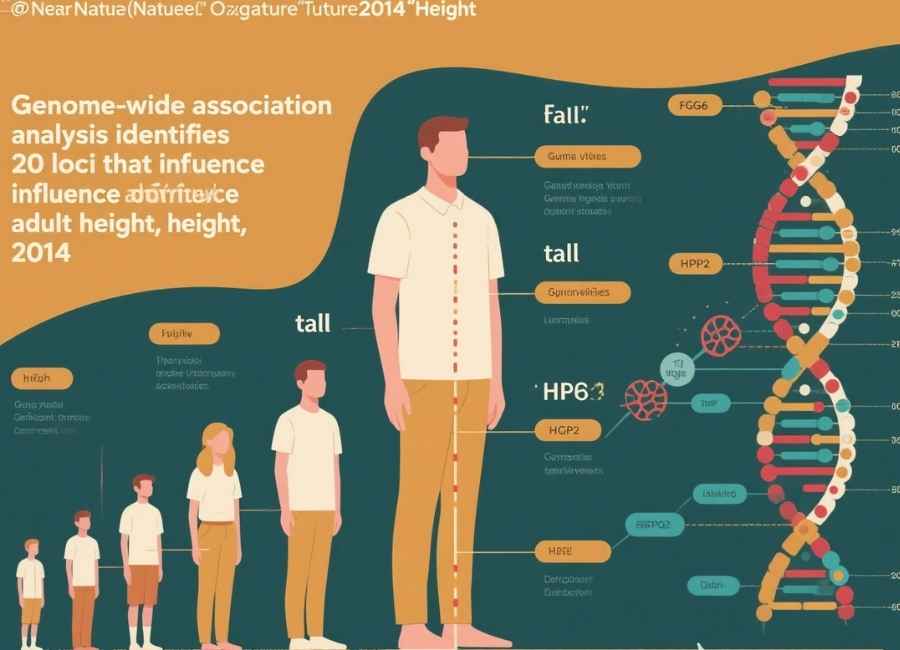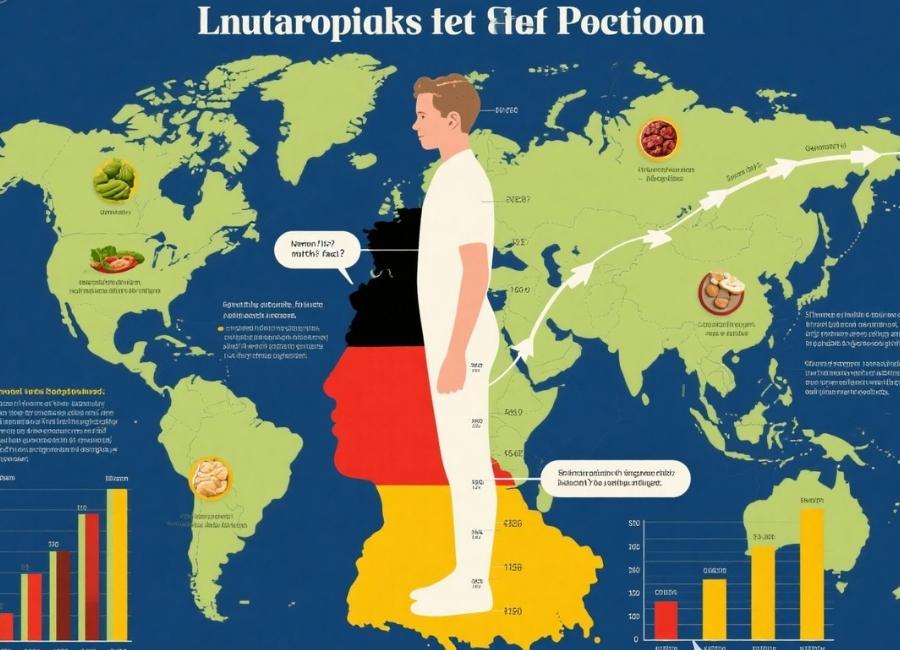Have you ever noticed that people from certain parts of the world seem to be taller than others? It’s a common observation, and when it comes to height, Germans often stand out—literally. The average German man is around 5 feet 11 inches (180 cm), while the average woman is about 5 feet 6 inches (168 cm). (Average Height in Germany 2025, 2025) These figures place them among the taller populations globally. (Average male and female height mapped, n.d.)
This observation often leads to a simple question: why are Germans so tall? Is it something in their genes, their diet, or perhaps a combination of factors? The answer isn’t a single “aha!” moment but rather a complex interplay of genetics, nutrition, and overall living standards that have evolved over centuries. This post will explore the scientific and historical reasons behind the height of the German population, separating myth from fact.
The Genetic Blueprint for Height

Genetics undoubtedly plays the most significant role in determining an individual’s potential for height. Think of your DNA as a set of instructions that dictates everything from your eye color to how tall you can possibly grow. Scientists have identified hundreds of specific gene variants that influence height. (Genome-wide association analysis identifies 20 loci that influence adult height, 2014) If a population has a high frequency of these “tall” gene variants, its average height will naturally be greater.
Historically, the Germanic tribes that settled in Northern Europe were known for their imposing stature. (The Enigmatic Heights of Germanic Tribes: Unveiling the Stature Secrets of Ancient Warriors!, n.d.) Ancient Roman accounts often described them as being significantly taller than the average Roman soldier. (Discover the Alluring Physique of Germanic Tribes: Unveiling the Secrets of their Striking Physical Appearance!, n.d.) This suggests a long-standing genetic predisposition for height in this region. Over centuries, these genetic traits have been passed down, creating a foundation for the height we see in the German population today.
However, genes only set the potential. They don’t guarantee that an individual will reach their maximum possible height. For that to happen, other factors must come into play, which is where environment and lifestyle make a crucial difference.
The Role of Nutrition in Reaching Full Potential

While genetics sets the height ceiling, nutrition determines how close a person gets to it. A diet rich in essential nutrients during childhood and adolescence is critical for proper growth and development. This is where modern Germany’s story provides clear answers.
High-Quality Diet and Food Security
For generations, the typical German diet has been rich in protein, calcium, and other essential vitamins and minerals. Key components include:
- Dairy Products: Milk, cheese, and yogurt are staples in Germany, providing the calcium necessary for strong bone development.
- Lean Meats and Fish: A high consumption of protein from sources like pork, beef, and various types of fish provides the building blocks for muscle and tissue growth.
- Whole Grains: Breads made from whole grains like rye and spelt offer essential nutrients and sustained energy, which are vital during formative growth years.
Just as important as the quality of the food is its availability. Germany has long enjoyed a high level of food security. (Global One Health Index – Food Security, 2023, 2023) This means that, unlike in many parts of the world where malnutrition and food shortages can stunt growth, the vast majority of German children have consistent access to the nutritious food they need to thrive and reach their full genetic height potential.
The Impact of Improved Diets Over Time
Historical data shows a clear trend: as a nation’s diet improves, so does its average height. (How Tall Would You Have Been 100 Years Ago?, 2016) Looking back a century or two, the average height in Germany was noticeably shorter than it is today. (Komlos et al., 2005) The economic prosperity following World War II led to significant improvements in public health and nutrition across the country. (Schleiermacher & Sabine, 2019) Better access to a wider variety of high-quality foods allowed successive generations to more fully realize the full potential encoded in their genes.
Economic and Social Factors

A country’s overall standard of living is a powerful indicator of its population’s health and physical stature. Factors beyond diet, such as healthcare, sanitation, and economic stability, create an environment where children can grow up healthy and strong.
Access to Excellent Healthcare
Germany is renowned for its high-quality, accessible healthcare system. (What Makes a German Hospital the Global Benchmark for Advanced Healthcare, 2025) From prenatal care for expectant mothers to regular check-ups for children, the system is designed to identify and address health issues early. This comprehensive care minimizes the impact of childhood illnesses that could otherwise hinder growth. Vaccinations, prompt treatment for infections, and health education all contribute to creating a population that is not held back by preventable health problems.
High Standards of Living
A high standard of living encompasses more than just healthcare. Clean water, effective sanitation systems, and quality housing all reduce the incidence of disease. Economic stability also means that families are generally less exposed to the chronic stress associated with poverty, which can negatively affect a child’s development. When a society provides a safe, healthy, and stable environment, it allows its younger generation to flourish physically.
Height as a Reflection of Well-Being
Ultimately, the height of a population is more than just a genetic curiosity; it’s a powerful indicator of a nation’s overall well-being. The story of why Germans are tall is not just about ancient genes. It’s a story of economic development, excellent public health, and a nutrient-rich diet that has allowed a population to consistently reach its genetic potential. While genetics laid the foundation, it was the social and nutritional environment of modern Germany that built the structure.










